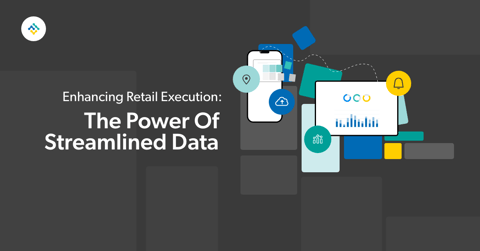In the age of the coronavirus pandemic, CPG brands are having an unexpected moment. While it seems like most of the world is at home waiting for the storm to pass, brands that sell essential goods are busier than ever as consumers stock up: 1/3 of Coresight Survey respondents reported buying more food/household products than normal, and while overall economic activity may be declining the demand for essential products is peaking. On March 13, CPG retail sales were 53% higher than the highest day in 2019.
This unexpected change in consumer activity has taken everyone by surprise, and some brands may be struggling to keep up with changes in demand. As the future remains uncertain, top brands are understanding the importance of putting new practices into place now in order to avoid strains on their supply chain and bottom line as the next few months unfold.
In this article, we’ll do a rollup on facts and statistics on how the virus is affecting the industry so far. We then go over the steps one large CPG brand is already taking to safeguard themselves against economic volatility moving forward, and show how other brands can use their own field teams to respond to unpredictable demand.
The Effect of Coronavirus So Far
According to a Nielsen report, early changes in shopping habits due to COVID-19 showed “shifts from shopping the perimeter of the store to the center,” where most non-perishables are located. The report warned that “drastic out-of-stocks may rise if concerns over healthcare provider and government preparedness grow.”
That being said, consumer behavior is likely to have multiple unexpected shifts in the coming months. Despite an initial surge in non-perishable purchases, as a greater percentage of the well-stocked households support stay-at-home directives, fresh product sales will rebound as pantry items are used; products that take time to consume will not be replaced soon. (IRi)
To further highlight market unpredictability, there was a huge spike in bidet purchases towards the end of March, likely as a response to the sweeping toilet paper stockouts that occurred as a result of panic-buying -- but now that toilet paper is back in stock, the bidet demand is likely to dip again. This goes to show that brands need to brace themselves for shifts in demand (we’re now in the “hair-dye phase” of panic-buying) that will ebb and flow based not only on demand for their own products, but also the demand for products they are in direct or indirect competition with.
Based on this information, it is vital that all CPG brands closely monitor not only broader market trends, but also in-store conditions in their accounts so they can adapt swiftly to changes in demand. While one product may be flying off the shelves one week, demand can shift quickly to another category by the next.
How Top Brands Are Adapting
So, the question is, how do brands adapt to these changes? For those selling at retail, it all starts with your field team. Your reps are your boots on the ground, witnessing first hand how the pandemic is affecting consumer behavior on a day-to-day basis. Leveraging them to respond to unpredictability is crucial right now, and having the right strategy in place to do so is what will get you there.
One large food and beverage brand that made adjustments to their retail execution strategy at the start of the crisis provides us with some strong data that shows how imperative field teams are in addressing this crisis head on. Below, we go through what brands will need to do to take full advantage of their field team’s capabilities, and provide real world examples from this brand as a framework for how to get it done.
Identify where you are at risk
As your team navigates an unfamiliar retail landscape, it is important to understand that old routines may no longer be as effective. Where your team may have been focusing on securing secondary displays or additional placements in the past, you’ll have to shift their focus more towards defending existing shelf space and satisfying the immediate need to keep your product fully stocked. The first step towards doing this is to identify high-risk products and accounts, and equip your reps with the tools they need to provide you with constant, accurate information on in-store conditions.
For example, at the beginning of March, the aforementioned successful brand identified four high-risk products to focus special attention on during the crisis. They then created a specialized survey that centered on monitoring the stock levels of these products. Over the course of the next five weeks, the survey was completed by their field team over 6,000 times, accounting for nearly ¼ of all forms submitted during that time period. Had they not implemented this change early on, it's possible that these products may have gone overlooked, making it much more difficult to adjust to sudden surges in demand.
Use data from the field to take action
Another way brands should be leveraging their field teams to help them handle the crisis is by responding quickly to in-store conditions. The fact of the matter is that no matter what you do, you won’t be able to predict the future -- but you can make sure you’re as best prepared for it as you can be. Your goal should be to stay as far ahead of upcoming market shifts as possible, allowing you to take corrective action before any losses accumulate.
An example of how the top CPG brand has stayed on top of unprecedented changes in demand manifested through their ability to catch out-of-stocks early on. A two week period in mid-March showed that total U.S. CPG sales (in-store and online) increased $8.5 billion from the two weeks prior. During this same period, our top brand saw over a 550% increase in reported OOS or low stock conditions. Because reps were catching these stock issues as they were happening, thousands of replenishment orders were placed during that two week period. By the week of 3/30, the total number of OOS or low stock reports decreased by more than 50%.
As demand continues to fluctuate unexpectedly due to changes in consumer behavior, government policies, and regional conditions, the ability to monitor how these changes affect in-store conditions will be paramount. By adapting your field team’s strategy quickly to respond to dynamic market conditions, you’ll be better equipped moving forward to closely monitor fluctuations and share insights with retail partners, supply chain managers, and distributors in real time. As the reality of our situation continues to take unprecedented twists, you will be able to leverage your field team to help you stay as far ahead of the curve as possible.




